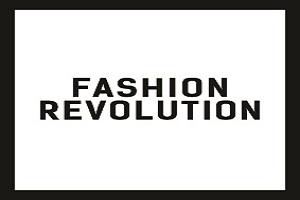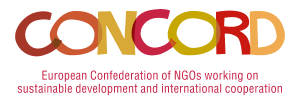
Start date and end date of the Action: 1 April – 31 December 2015
Fashion Revolution 2015 has exceeded all expectations. By the end of 2014, the campaign started with 65 countries involved in the call to action, and it grew to 82 (30 in Europe) by 31 December 2015. On Fashion Revolution Day 24th April 2015, there were 1,429 events globally in 266 cities involving 134,107 people. In the EU, there were 531 events in 101 cities involving 58,000 people. 21 events took place around government buildings, or buildings used by key policy makers, with 54 MPs, MEPs and other policy influencers (mainly in the UK and EU) showing the label of their clothes on that day.
The digital campaign far surpassed the expectations. In April 2015 alone, there were 63 million unique views of the #whomademyclothes on Twitter and Instagram, producing a total of 124 million impressions, and over 2,250 press articles (print, digital and broadcast) with over 16.5 billion (11.6 billion in the EU) overall digital press reach, meaning the number of times content about Fashion Revolution was viewed. The total global digital press reach from April to December 2015 was 8.5 billion unique visitors, with 21.7 billion potential viewership (4.7 billion unique users and 15.5 billion viewership in the EU). 26 posts and stories were posted on the official EYD website, linking fashion and development to each of the thematic months of the year.
42,000 contacted brands and retailers to ask “Who Made My Clothes?” with question reaching 24 million people on 24 April 2015 (potential impacts over a 24-hour period). Brands responded to the “Who Made My Clothes?” campaign question with varying degrees of depth, but we are beginning to see how applied pressure is encouraging brands and retailers to be more open and transparent about their supply chain practices. In total, 84 leading well-known brands, most notably Zara (http://fashionrevolution.org/thanks-zara/), Boden, American Apparel, Tesco, Bed Bath & Beyond, Billy Reid, Eileen Fisher, Primark, Whistles and Desigual, responded to the #whomademyclothes campaign with information about their supply chains. Zara (Inditex) will commence a trial of labelling clothes from a selected line with a ‘traceability tag,’ starting in their Brazil stores. Fashion Revolution has a very active team in Brazil.
We are also beginning to see more and more producers and makers step forward to make themselves seen and heard. 80 ‘Meet Your Maker’ blog texts were posted up until the end of December 2015, which tell the stories of people in the supply chain making clothes for familiar fashion brands.
In total, 228 local producer organisations were involved in 2015. Makers and producers took part in the social media campaign through various tools: together with Fairtrade Foundation, a twitter Q&A was conducted with a cotton farmer and as part of one of the London events a Skype call was set up between consumers and makers via a local retailer; in both cases a very real, human connection was created and a conversation was instigated as part of our campaign vision. 104 events took place around the world in factories, or in other locations providing opportunities to meet the people in the supply chain. Particularly notable is the ‘Trace My Fashion’ initiative in Bangladesh, which launched on Fashion Revolution Day.
Fashion Revolution’s 2015 campaign ensured the widest participation from a great number of different constituencies, from garment workers to students of primary and secondary school as well as universities across Europe, politicians and NGOs, press and celebrities and consumers of all ages, both European citizens and on a global level. In total, it was counted that approx. 300 (local, national and international, about 100 in the EU) celebrities / influencers were involved during 2015. The campaign has begun to show that many generations and demographic groups are interested in furthering their understanding on this topic and that connecting with producers throughout the fashion and textile supply chain is relevant. for example, 2.5 billion potential digital viewership was achieved during September, coinciding with the activation around the various Fashion Weeks in Europe and New York. The key target demographic was effectively reached via the ‘Haulternative’ campaign, also featured in the Daily Telegraph, which was aimed at raising awareness amongst young millennial age YouTube followers by collaborating with celebrity vloggers: the campaign achieved 1.84 million views by the end of December. The impact of the #haulternative videos went beyond just viewing the videos, as many people decided to make their own #haulternative video, which demonstrates how viewers have moved from awareness to action.
The film ‘the 2 euro t-shirt, a social experiment’, screened at Glastonbury Festival before every film screening in the film tent and before the Amy Winehouse film on one of the main stages, went viral and was spread on social media by celebrities reaching over 7.3 million views so far.
Press coverage of the campaign was wide and varied including global news services such as BBC, CNN, MSN, Yahoo, and Fox News; The Diplomat, fashion magazines such as Marie Claire, Elle, Grazia, Glamour, Harper’s Bazaar, Cosmopolitan, Vogue in multiple countries; national broadsheets such as The Guardian, The Telegraph, Le Monde, The Daily Mail, Le Parisian, El Pais, Express.de; and culture publications such as Vice, i-D, Huffington Post, Quartz, Dazed & Confused, Mashable, Business of Fashion, GQ, Forbes, Fortune, The Examiner, Popsugar, Business Insider, Drapers, WGSN; and so on. Fashion Revolution founders featured on prominent TV and radio broadcasting stations, such as BBC World Service (radio) which has 210 million listeners and BBC World Business News (TV), the most widely watched BBC channel with 75 million viewers.
Fashion Revolution achieved 271,809 page views for the action materials, and in Europe alone, there were 133,611 sessions on the Fashion Revolution website – this shows significant engagement throughout the EU and the rest of the world.
